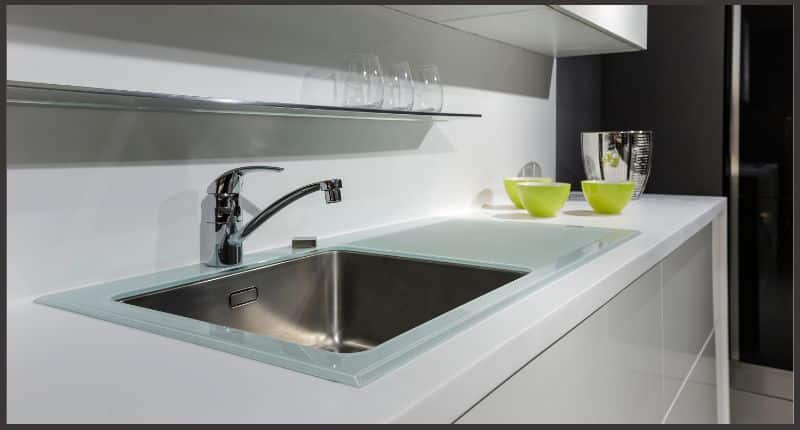Welcome to our guide on how to organize kitchen cabinets! Having an efficiently arranged kitchen is the key to a stress-free cooking experience. Whether you have limited space or simply want to make your cabinets easier to navigate, this step-by-step guide will help you maximize storage and accessibility. From decluttering and categorizing items to utilizing space-saving solutions, we will explore practical tips and tricks that will transform your kitchen cabinets into a well-organized haven. Say goodbye to searching for that elusive spice jar or struggling to find the right lid for your pots and pans. Let’s begin organizing your kitchen cabinets to create a functional and inspiring culinary environment.
Table of Contents
How to Organize Kitchen Cabinets: A Complete Guide
Are you tired of rummaging through your kitchen cabinets trying to find that elusive spice jar or the perfect-sized pot? Do you often find expired food hidden in the depths of your pantry? If so, it’s time to get your kitchen cabinets organized. Organizing your kitchen cabinets not only makes your life easier but also saves you valuable time and helps prevent food waste. In this comprehensive guide, we will walk you through the step-by-step process of organizing your kitchen cabinets, from decluttering to maximizing storage space.
Why Should You Organize Your Kitchen Cabinets?
Before we delve into the nitty-gritty of organizing your kitchen cabinets, let’s take a moment to understand why it’s essential. Many of us use our kitchen cabinets as makeshift storage spaces, shoving items in wherever there’s an empty spot. However, this haphazard approach can lead to several issues:
- Wasted Time: Searching for items can be frustrating and time-consuming, especially when you’re in the middle of preparing a meal. By organizing your cabinets, you’ll be able to find everything easily, saving you precious minutes.
- Food Waste: When your cabinets are disorganized, it’s easy for items to get lost or buried, leading to food waste. By keeping everything visible and accessible, you’ll be able to use up ingredients before they expire.
- Stress and Overwhelm: Cluttered cabinets can create a sense of chaos and make your kitchen feel smaller and more cramped. When you can’t find what you need, it adds unnecessary stress to your daily life. Organizing your cabinets will help create a sense of calm and make your kitchen a more pleasant space.
Step 1: Decluttering Your Kitchen Cabinets
The first step towards an organized kitchen is decluttering. You don’t want to arrange items that you no longer need or use. Here’s how to tackle this task:
- Empty and Assess: Take everything out of your cabinets and assess each item. Ask yourself if you’ve used it in the past year, if it’s still functional, and if it brings you joy. If not, it’s time to let go.
- Donate or Discard: Create three piles: donate, discard, and keep. Donate items that are in good condition but no longer needed, and toss out items that are broken, expired, or no longer usable. Only keep what you truly need and use regularly.
- Categorize: Sort through the items you are keeping and categorize them. Group similar items together, such as baking supplies, canned goods, spices, etc. This will make it easier to find and organize them later.
Remember, decluttering is an ongoing process. Regularly assess your cabinets and remove any items that you no longer need or use, preventing clutter from building up again.
Step 2: Maximizing Storage Space
Now that you have decluttered, it’s time to make the most of your kitchen cabinet space:
- Adjust Shelves: Most kitchen cabinets come with adjustable shelves. Experiment with different heights to accommodate items of various sizes. Taller shelves can be used to store bulky appliances, while shorter shelves are perfect for storing plates and bowls.
- Utilize Cabinet Doors: Don’t overlook the back of your cabinet doors. Install hooks or small racks to hang utensils, measuring spoons, pot lids, or cutting boards. This not only creates additional storage space but also keeps frequently used items easily accessible.
- Invest in Organizational Tools: There are countless organizational tools available to maximize cabinet space. Consider using stackable bins, lazy Susans, or pull-out drawers to make the most of deep cabinets or corner spaces. These tools will help keep your cabinets neat and ensure every inch of space is utilized.
Remember that the key to maximizing storage space is to think vertically and utilize every nook and cranny of your cabinets.
Step 3: Organizing Your Kitchen Cabinets
Now that you’ve decluttered and optimized your storage space, it’s time to organize your items in a way that makes sense for your cooking style and lifestyle:
- Create Zones: Divide your cabinets into zones based on functionality. For example, dedicate one cabinet to baking supplies, another to pantry staples, and a separate one for pots and pans. This way, you’ll know exactly where everything belongs, making it easy to find and put away.
- Arrange by Frequency of Use: Store frequently used items at eye level and within easy reach. Reserve higher or lower shelves for items you use less often. This simple step will save you time and effort in your daily cooking routine.
- Label Everything: Labels not only add a touch of organization but also make it easier for everyone in the household to find and return items to their proper places. Use a label maker or chalkboard labels to ensure everything has a designated spot.
Remember, the goal is to create a system that works for you and helps maintain organization in the long run.
Maintaining the Organization
Now that you’ve put in the effort to organize your kitchen cabinets, it’s crucial to maintain the newfound order:
- Regularly Assess and Declutter: Set aside time every few months to reassess and declutter your cabinets. Remove any items that have accumulated but are no longer needed or used.
- Keep Items Visible and Accessible: As you use items, be mindful of putting them back where they belong. Avoid creating clutter by simply shoving things in cabinets. Take an extra second to return items to their designated spots.
- Meal Planning: Planning your meals in advance can help you stay organized and prevent food waste. Use your organized cabinets to easily see what ingredients you have on hand and plan your meals accordingly.
Remember, maintaining organization is an ongoing process that requires consistency and effort. Embrace the habit, and soon it will become second nature.
Conclusion
Organizing your kitchen cabinets is a game-changer when it comes to streamlining your cooking routine and creating a more functional kitchen. By decluttering, maximizing storage space, and organizing items in a logical manner, you’ll save time, reduce stress, and prevent food waste. Remember, the key is to tailor the organization system to your needs, ensuring that it’s easy to maintain in the long run. Get started today and experience the joy of a well-organized kitchen!

Photo by Naomi Hébert on Unsplash
Additional Guide
To organize your kitchen cabinets effectively, it is important to consider factors such as maximizing space, utilizing storage solutions, and maintaining a clutter-free environment. Here are three related articles that can provide valuable insights and tips:
1. How to Make a Small Kitchen Look Bigger: This article offers creative ideas and strategies for optimizing the space in a small kitchen, which can be helpful when organizing your kitchen cabinets.
2. Things to Consider When Designing a Kitchen: Designing a functional kitchen layout is crucial for efficient organization. This article discusses key considerations to keep in mind when planning your kitchen design.
3. Wood Kitchen Cabinet: 10 Best Ideas for Stylish and Functional Storage: This article provides inspiration for choosing the right kitchen cabinet design and storage solutions that can help you keep your kitchen organized and visually appealing.
By incorporating the tips and ideas from these articles, you can effectively organize your kitchen cabinets and create a more efficient and enjoyable cooking environment.
FAQs: how to organize kitchen cabinets
1. How should I start organizing my kitchen cabinets?
Start by emptying out your cabinets completely and sorting through all the items. Categorize them into groups such as cookware, bakeware, utensils, and food storage. Once sorted, discard any damaged or unused items. This will give you a clear idea of what needs to go back into your cabinets and how to organize them effectively.
2. What are some tips for maximizing space in my kitchen cabinets?
To maximize space in your kitchen cabinets, consider using organizers such as stackable shelves, drawer dividers, or pull-out baskets. These can help create additional vertical or horizontal space, making it easier to access and store items. Utilize the inside of cabinet doors by installing hooks or small shelves for storing lids, measuring spoons, or frequently used utensils.
3. How should I arrange my dishes and glassware in kitchen cabinets?
Arrange your dishes and glassware based on frequency of use and accessibility. Keep everyday dishes and glassware on lower shelves for easy access. Group similar items together to minimize searching, and consider using plate stands or dividers to prevent stacking and potential breakage. Store fragile items higher up or in a more secure location.
4. What’s the best way to store pots, pans, and lids in kitchen cabinets?
There are multiple ways to store pots, pans, and lids efficiently. Utilize deep drawers or install a pot and pan organizer to keep them easily accessible. Nest pots and pans together to save space, and place lids either on their corresponding pots or in a lid organizer. If cabinet space is limited, consider hanging pots and pans from a wall or ceiling rack to free up valuable cabinet space.


